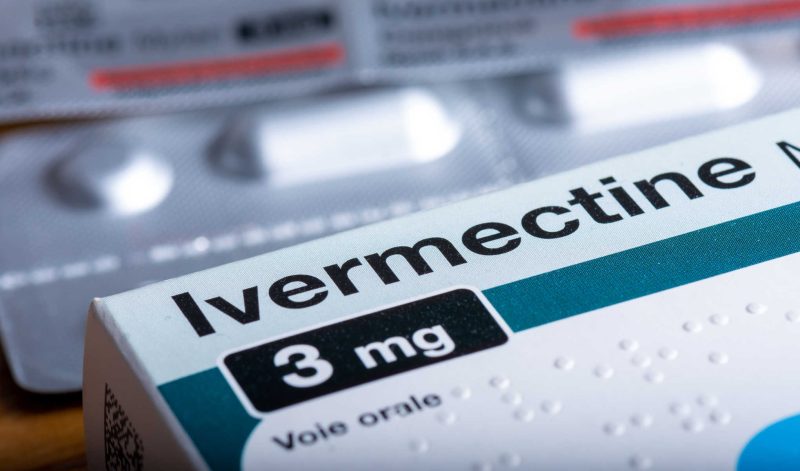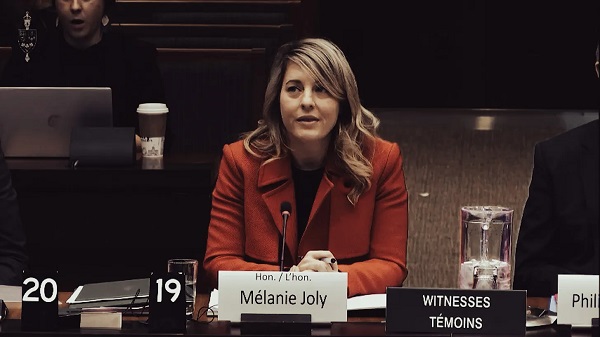Brownstone Institute
Medical Elites’ Disgrace Over Ivermectin

From the Brownstone Institute
BY
In the wake of the FDA settling a lawsuit brought against it for wantonly and aggressively smearing ivermectin, the agency has deleted its postings. That’s good, but we shouldn’t forget how egregiously it mischaracterized the drug, ignored copious evidence in its favor, and portrayed its proponents as dangerous crackpots.
About 30 months ago, America’s FDA was publishing articles with headlines like this: “Should I take ivermectin to treat COVID?” Answer: No. The agency also told Americans not to use ivermectin to prevent Covid. Then, in what became known as its infamous “horse tweet,” the FDA even patronizingly told Americans: “Seriously, y’all. stop it.”
Prescribers who advocated for alternate treatments like ivermectin or hydroxychloroquine were mocked online by America’s “trusted journalists” as being part of a “right-wing conspiracy” and labeled “hucksters.” Those who didn’t demure to the Covid mRNA or other Big Pharma treatment narratives were banned, fired, and spoken harshly about around the world and into the reaches of the stratosphere in what seemed like coordinated messaging.
Many clinicians lost their jobs – at best. At worst, their reputations, practices, finances, and careers were shattered. If that was not bad enough, after losing their jobs, state medical and pharmacy boards initiated legal proceedings against their licensure, singling out their “off-label” Covid treatments, despite other off-label treatments being a near-ubiquitous component of pharmacy and medical practice.


Within days of FDA’s initial postings above, the American Pharmacist’s Association (APhA) the American Society of Health System Pharmacists (ASHP), and the American Medical Association (AMA) all collaborated to release a joint press release condemning doctors who prescribed ivermectin to treat Covid, but it appears that these organizations, instead of actually performing independent analysis of primary literature data, blindly regurgitated FDA, CDC, and NIH plus other government and Big Pharma talking points “strongly opposing” ivermectin use.
For generations and especially during the Covid pandemic, professionals depended on these “elite” medical groups. Some of them have existed for around 170 years and have around $150 million to $1.2 billion in assets, so they clearly had the history, personnel, and wherewithal to objectively examine published data. Even beyond that, the AMA has several floors in a skyscraper in Chicago and the APhA’s Constitution Avenue’s “landmark headquarters” is so luxuriant that it is advertised and utilized as a wedding venue.
Of course, that extravagance was paid for by millions of pharmacists, physicians, and benefactors who expected these organizations to act as a checksum and ensure excellent clinical practice standards. These medical organizations have a duty to honor their histories, responsibilities, and ethical duties to better the human condition through verified scientific evidence. Instead, they appeared to outrageously abandon their obligations from their lofty positions of respect, comfort, money, and power.
APhA, ASHP, and AMA Clinical Declarations Now Indefensible:
On March 22, the FDA rightly acquiesced and agreed to remove their anti-ivermectin postings due to 1) a lawsuit filed against them and 2) the impossible task of having to defend themselves with an overwhelming amount of data disagreeing with not only dispensing medical recommendations, but the published data backing their Covid-19 use (e.g., see below).
With that gone, the APhA, ASHP, and AMA assertions suddenly have no leg upon which to stand.
Several non-FDA links within their press releases have (unsurprisingly) also quietly vanished with no explanation. NIH references are slated to be shut down, on top of multiple FDA and CDC links already no longer working.
Ivermectin Mechanism of Action, History and Evidence:
The broad antiviral mechanism of action of ivermectin is complicated and may partially involve blocking the uptake of viral proteins, but the bottom line is that it has been shown to yield positive results in a variety of published results for Covid-19. Had APhA, ASHP, and AMA pharmacists and physicians independently examined the data, (as I, just one drug-safety analyst without fancy headquarters, have done) rather than simply parroting now-deleted narratives of others, they would have learned that ivermectin works as an antiviral.
It has an extensively proven track record of being not just safe – but astonishingly safe for a variety of viral diseases. This is not breaking or fringe science; it has been known for years. Ivermectin is such a safe and effective drug that back in 2015 it was the first drug for infectious disease associated with a Nobel Prize in 60 years.
While I have stacks of electronic files and printed materials, dog-eared and food/drink-stained, there is a most elegantly presented meta-analysis website designed by some brainy and web-savvy scientists detailing over 100 studies from over 1,000 different scientists, involving over 140,000 patients in 29 countries describing the benefit and safety of ivermectin for Covid-19 treatment. It actually appears to be more extensive than Cochrane’s outdated review of ivermectin which only examined 14 trials – and excluded seven of them from consideration.

According to these data, consisting of smaller international publications that include real-world findings and small observational studies, ivermectin shows a statistically significant lower Covid-19 risk as detailed in the image above.
The less-positive findings associated with late treatment/viral clearance/hospitalization data cohort were associated with delayed administration. That is because any late-state use of antiviral pharmacology tends to be ineffective after hundreds of millions of viral replications have taken place – whether it’s cold sores, influenza, AIDS, or Covid-19.
ASHP, APhA, and AMA Press Releases Contradict Available Data and Clinical Practice Standards:
When the FDA scolded Americans not to use ivermectin for Covid-19, on April 25, 2021, there were 43 different published manuscripts showing its potential benefit. Around three months later, on August 21, the FDA released its infamous horse/cow tweet which implied that ivermectin was only for animals, not humans. This “doubling down” occurred as an additional 20 studies had subsequently been written detailing additional benefits for Covid-19. See the timeline below:

Multiple APhA/ASHP/AMA statements ignored published scientific and clinical evidence. Specifically, statements declaring the: “Use of ivermectin for the prevention and treatment of COVID-19 has been demonstrated to be harmful to patients” (bold emphasis theirs) are objectively inaccurate. I do not know on what basis those statements were made. The recommendation to healthcare professionals to “…counsel patients against use of ivermectin as a treatment for COVID-19, including emphasizing the potentially toxic effects of this drug” represents a departure from pharmacist and physician practice standards.
The absurdity of the latter statement is quite outrageous. Pharmacists and physicians know that all drugs have “…potentially toxic effects” so if they applied the standard of “emphasizing potentially toxic effects” while discussing every prescribed medication, few if any patients would ever take any of their medications. The APhA/ASHP/AMA discriminatory hostility towards ivermectin was not only clinically unjustified and irresponsible; it was – as far as I know – without precedent.
These anti-ivermectin talking points also benefited new Big Pharma product advancement including the rebounding, overpriced taxpayer-funded boondoggle of Paxlovid and Remdesivir, such a “safe and effective” drug that hospitals had to be heavily incentivized (i.e., bribed) to entice nurses, physicians, and hospital administrators to promote its use with a staggering 20% “bonus” on the entire hospital bill paid by our federal government. Remdesivir quickly earned the sardonic nickname of “run-death-is-near” by American Frontline Nurses and others, due to serious questions about its clinical benefit.
Why were federal agencies’ and professional organizations’ talking points against ivermectin not backed by independent, original APhA/ASHP/AMA data examinations? That question needs to be thoroughly probed with regard to potential regulatory capture within these groups.
Both then and now, those FDA webpages, postings, and tweets were not just biased. They were irresponsible in their denigrating ivermectin as an off-label treatment, which is why they are now gone.
The question is, who was worse? The FDA for overstepping its congressional authority in not just making medical recommendations, but making recommendations ignoring data, or the servile “independent” elite professional organizations exuberantly echoing a narrative?
Prescient or not, here is an excerpt of the expert panel congressional testimony to the Covid Select House Oversight Committee, explaining the FDA’s disparaging ivermectin versus promoting mRNA injections using an automobile analogy, delivered just one day prior to the FDA’s yielding to physicians’ lawsuit to remove its postings denigrating ivermectin:
Despite FDA Settlement and Data Abundance, the Press is Still Anti-Ivermectin
Even after the FDA’s about-face, on March 26, 2024, a Los Angeles Times journalist published a column calling the removal of FDA tweets “groundless” unilaterally declaring ivermectin is still “conclusively shown to be useless against COVID-19,” comparing ivermectin to “snake oil,” and describing those who advocate for it as “purveyors of useless but lucrative nostrums” …whatever that means. (Regarding the ‘lucrative’ claim, it is worth noting that since ivermectin is generic and inexpensively available, it is not ‘lucrative’ to anyone.) It also referenced ivermectin lacking “scientific validation,” even though the above-cited data abundantly indicates otherwise.
Regarding the FDA’s choice to settle its lawsuit disparaging ivermectin, the FDA’s Center for Drug Evaluation and Research leadership isn’t “shooting itself in the foot” as the Times says. It seems that the FDA is indirectly attempting to prevent further embarrassment likely because it now realizes that its ivermectin assertions were wrong and outdated with every passing day. But where does that leave the APhA, ASHP, or AMA who heavily relied on these now deleted FDA links in their press releases?
The APhA, ASHP, AMA Response to the FDA’s Removal of Postings Used in Press Releases? An Embarrassing Silence:
Over a month later, and as of this publication date, none of these organizations have a single thing to say about their previous press releases quoting the now-removed FDA articles and tweets. In fact, here is an indication of their concerns: one week after the FDA acquiesced to remove its postings in ivermectin, APhA’s newly elected speaker chair and pharmacist Mary Klein is “happy danc[ing]” and giving her official acceptance speech wearing Mickey Mouse ears. ASHP’s (A/K/A “#MedicationExperts”) still shows its official page with clinicians wearing ineffective, unnecessary surgical masks despite the pandemic having ended well over a year ago and Cochrane reviews indicating that this sort of masking is almost certainly ineffective. AMA officials are making multiple posts on transgender issues and declaring climate change a public health crisis, – all while fully ignoring its impactful, incorrect, inappropriate statements on ivermectin.
Take a look:


The APhA, ASHP, and AMA have remained conspicuously silent on this topic while focusing their newsfeeds on everything but. To this day, their press releases remain online, with multiple dead links to government agencies. In blindly backing incorrect narratives pointing to removed web pages, they are now all alone in their ivermectin declarations.
Bottom line: ivermectin was and is safe, and more than likely effective for Covid when timed and dosed correctly, and under medical supervision, despite what was declared by organizations and federal officials. In fact, ivermectin’s general antiviral activity might even be helpful for bird flu (avian influenza) in animals and humans, in lieu of another novel adverse-event-ridden “warp speed” mRNA “vaccine” with an endless boondoggle of boosters.
The past and current record on ivermectin needs to be set straight. We know there is an important (but untransparent) list of who is responsible for misrepresenting published data, but will anyone be held accountable?
DISCLAIMER: Do NOT discontinue or initiate taking ANY drug without first discussing it with a pharmacist or physician you know and trust.
Brownstone Institute
Bizarre Decisions about Nicotine Pouches Lead to the Wrong Products on Shelves

From the Brownstone Institute
A walk through a dozen convenience stores in Montgomery County, Pennsylvania, says a lot about how US nicotine policy actually works. Only about one in eight nicotine-pouch products for sale is legal. The rest are unauthorized—but they’re not all the same. Some are brightly branded, with uncertain ingredients, not approved by any Western regulator, and clearly aimed at impulse buyers. Others—like Sweden’s NOAT—are the opposite: muted, well-made, adult-oriented, and already approved for sale in Europe.
Yet in the United States, NOAT has been told to stop selling. In September 2025, the Food and Drug Administration (FDA) issued the company a warning letter for offering nicotine pouches without marketing authorization. That might make sense if the products were dangerous, but they appear to be among the safest on the market: mild flavors, low nicotine levels, and recyclable paper packaging. In Europe, regulators consider them acceptable. In America, they’re banned. The decision looks, at best, strange—and possibly arbitrary.
What the Market Shows
My October 2025 audit was straightforward. I visited twelve stores and recorded every distinct pouch product visible for sale at the counter. If the item matched one of the twenty ZYN products that the FDA authorized in January, it was counted as legal. Everything else was counted as illegal.
Two of the stores told me they had recently received FDA letters and had already removed most illegal stock. The other ten stores were still dominated by unauthorized products—more than 93 percent of what was on display. Across all twelve locations, about 12 percent of products were legal ZYN, and about 88 percent were not.
The illegal share wasn’t uniform. Many of the unauthorized products were clearly high-nicotine imports with flashy names like Loop, Velo, and Zimo. These products may be fine, but some are probably high in contaminants, and a few often with very high nicotine levels. Others were subdued, plainly meant for adult users. NOAT was a good example of that second group: simple packaging, oat-based filler, restrained flavoring, and branding that makes no effort to look “cool.” It’s the kind of product any regulator serious about harm reduction would welcome.
Enforcement Works
To the FDA’s credit, enforcement does make a difference. The two stores that received official letters quickly pulled their illegal stock. That mirrors the agency’s broader efforts this year: new import alerts to detain unauthorized tobacco products at the border (see also Import Alert 98-06), and hundreds of warning letters to retailers, importers, and distributors.
But effective enforcement can’t solve a supply problem. The list of legal nicotine-pouch products is still extremely short—only a narrow range of ZYN items. Adults who want more variety, or stores that want to meet that demand, inevitably turn to gray-market suppliers. The more limited the legal catalog, the more the illegal market thrives.
Why the NOAT Decision Appears Bizarre
The FDA’s own actions make the situation hard to explain. In January 2025, it authorized twenty ZYN products after finding that they contained far fewer harmful chemicals than cigarettes and could help adult smokers switch. That was progress. But nine months later, the FDA has approved nothing else—while sending a warning letter to NOAT, arguably the least youth-oriented pouch line in the world.
The outcome is bad for legal sellers and public health. ZYN is legal; a handful of clearly risky, high-nicotine imports continue to circulate; and a mild, adult-market brand that meets European safety and labeling rules is banned. Officially, NOAT’s problem is procedural—it lacks a marketing order. But in practical terms, the FDA is punishing the very design choices it claims to value: simplicity, low appeal to minors, and clean ingredients.
This approach also ignores the differences in actual risk. Studies consistently show that nicotine pouches have far fewer toxins than cigarettes and far less variability than many vapes. The biggest pouch concerns are uneven nicotine levels and occasional traces of tobacco-specific nitrosamines, depending on manufacturing quality. The serious contamination issues—heavy metals and inconsistent dosage—belong mostly to disposable vapes, particularly the flood of unregulated imports from China. Treating all “unauthorized” products as equally bad blurs those distinctions and undermines proportional enforcement.
A Better Balance: Enforce Upstream, Widen the Legal Path
My small Montgomery County survey suggests a simple formula for improvement.
First, keep enforcement targeted and focused on suppliers, not just clerks. Warning letters clearly change behavior at the store level, but the biggest impact will come from auditing distributors and importers, and stopping bad shipments before they reach retail shelves.
Second, make compliance easy. A single-page list of authorized nicotine-pouch products—currently the twenty approved ZYN items—should be posted in every store and attached to distributor invoices. Point-of-sale systems can block barcodes for anything not on the list, and retailers could affirm, once a year, that they stock only approved items.
Third, widen the legal lane. The FDA launched a pilot program in September 2025 to speed review of new pouch applications. That program should spell out exactly what evidence is needed—chemical data, toxicology, nicotine release rates, and behavioral studies—and make timely decisions. If products like NOAT meet those standards, they should be authorized quickly. Legal competition among adult-oriented brands will crowd out the sketchy imports far faster than enforcement alone.
The Bottom Line
Enforcement matters, and the data show it works—where it happens. But the legal market is too narrow to protect consumers or encourage innovation. The current regime leaves a few ZYN products as lonely legal islands in a sea of gray-market pouches that range from sensible to reckless.
The FDA’s treatment of NOAT stands out as a case study in inconsistency: a quiet, adult-focused brand approved in Europe yet effectively banned in the US, while flashier and riskier options continue to slip through. That’s not a public-health victory; it’s a missed opportunity.
If the goal is to help adult smokers move to lower-risk products while keeping youth use low, the path forward is clear: enforce smartly, make compliance easy, and give good products a fair shot. Right now, we’re doing the first part well—but failing at the second and third. It’s time to fix that.
Addictions
The War on Commonsense Nicotine Regulation

From the Brownstone Institute
Cigarettes kill nearly half a million Americans each year. Everyone knows it, including the Food and Drug Administration. Yet while the most lethal nicotine product remains on sale in every gas station, the FDA continues to block or delay far safer alternatives.
Nicotine pouches—small, smokeless packets tucked under the lip—deliver nicotine without burning tobacco. They eliminate the tar, carbon monoxide, and carcinogens that make cigarettes so deadly. The logic of harm reduction couldn’t be clearer: if smokers can get nicotine without smoke, millions of lives could be saved.
Sweden has already proven the point. Through widespread use of snus and nicotine pouches, the country has cut daily smoking to about 5 percent, the lowest rate in Europe. Lung-cancer deaths are less than half the continental average. This “Swedish Experience” shows that when adults are given safer options, they switch voluntarily—no prohibition required.
In the United States, however, the FDA’s tobacco division has turned this logic on its head. Since Congress gave it sweeping authority in 2009, the agency has demanded that every new product undergo a Premarket Tobacco Product Application, or PMTA, proving it is “appropriate for the protection of public health.” That sounds reasonable until you see how the process works.
Manufacturers must spend millions on speculative modeling about how their products might affect every segment of society—smokers, nonsmokers, youth, and future generations—before they can even reach the market. Unsurprisingly, almost all PMTAs have been denied or shelved. Reduced-risk products sit in limbo while Marlboros and Newports remain untouched.
Only this January did the agency relent slightly, authorizing 20 ZYN nicotine-pouch products made by Swedish Match, now owned by Philip Morris. The FDA admitted the obvious: “The data show that these specific products are appropriate for the protection of public health.” The toxic-chemical levels were far lower than in cigarettes, and adult smokers were more likely to switch than teens were to start.
The decision should have been a turning point. Instead, it exposed the double standard. Other pouch makers—especially smaller firms from Sweden and the US, such as NOAT—remain locked out of the legal market even when their products meet the same technical standards.
The FDA’s inaction has created a black market dominated by unregulated imports, many from China. According to my own research, roughly 85 percent of pouches now sold in convenience stores are technically illegal.
The agency claims that this heavy-handed approach protects kids. But youth pouch use in the US remains very low—about 1.5 percent of high-school students according to the latest National Youth Tobacco Survey—while nearly 30 million American adults still smoke. Denying safer products to millions of addicted adults because a tiny fraction of teens might experiment is the opposite of public-health logic.
There’s a better path. The FDA should base its decisions on science, not fear. If a product dramatically reduces exposure to harmful chemicals, meets strict packaging and marketing standards, and enforces Tobacco 21 age verification, it should be allowed on the market. Population-level effects can be monitored afterward through real-world data on switching and youth use. That’s how drug and vaccine regulation already works.
Sweden’s evidence shows the results of a pragmatic approach: a near-smoke-free society achieved through consumer choice, not coercion. The FDA’s own approval of ZYN proves that such products can meet its legal standard for protecting public health. The next step is consistency—apply the same rules to everyone.
Combustion, not nicotine, is the killer. Until the FDA acts on that simple truth, it will keep protecting the cigarette industry it was supposed to regulate.
-

 Agriculture2 days ago
Agriculture2 days agoDanish Cows Collapsing Under Mandatory Methane-Reducing Additive
-

 Alberta2 days ago
Alberta2 days agoAlberta government’s plan will improve access to MRIs and CT scans
-

 Business2 days ago
Business2 days agoNo Jobs Clause: Liberals Under Fire Over Stellantis Deal in Fiery Committee Showdown
-

 Economy2 days ago
Economy2 days agoWelcome to the Energy Humanist Club! Bill Gates breaks the moral monopoly against fossil fuels
-

 Business1 day ago
Business1 day agoBudget 2025 continues to balloon spending and debt
-

 Censorship Industrial Complex1 day ago
Censorship Industrial Complex1 day agoHow the UK and Canada Are Leading the West’s Descent into Digital Authoritarianism
-

 Business1 day ago
Business1 day agoCapital Flight Signals No Confidence In Carney’s Agenda
-

 Business1 day ago
Business1 day agoFederal budget: Carney government posts largest deficit in Canadian history outside pandemic












